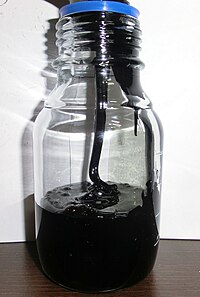
Photo from wikipedia
Abstract The processes underpinning the differences between Antarctic and sub-Antarctic ecological communities are still unclear. Dispersal, drift, speciation, and abiotic environmental filtering have been considered to explain these differences; biotic… Click to show full abstract
Abstract The processes underpinning the differences between Antarctic and sub-Antarctic ecological communities are still unclear. Dispersal, drift, speciation, and abiotic environmental filtering have been considered to explain these differences; biotic interactions, however, have received less attention. Antarctic intertidal assemblages of macrobenthic grazers are characterised by numerically abundant populations of a single species, Nacella concinna. In contrast, sub-Antarctic habitats display a diverse assemblage of herbivores like chitons, keyhole limpets, and several species of Nacella. Thus, it was hypothesised that herbivores would have significant density-dependent effects of a single species on benthic primary productivity in Antarctica, but stronger effects of the whole assemblage in the sub-Antarctic. Field grazer inclusion-exclusion experiments showed that chlorophyll-a (chl-a) concentration was one order of magnitude lower in Fildes Bay (King George Island, Antarctica) than in the Strait of Magellan (Chilean South Patagonia). Still, grazers had significant and negative effects on chl-a accrual, a proxy for productivity, in both sites. In Fildes Bay, these effects were similar between experimental levels or grazer density. Accordingly, evidence for negative density dependence of per capita interaction strength was detected in this region. In the Strait of Magellan, only the open access treatments, exposed to the diverse assemblage of grazers, significantly decreased chl-a accrual. Grazers negatively affected the relative abundance of browns (i.e. diatoms, dinoflagellates, and early stages of brown algae) and cyanobacteria at both sites, but favoured green algae and bare substratum in Fildes Bay and Strait of Magellan, respectively. These results suggest that different mechanisms, such as negative density dependence and resource partitioning, can lead to similar grazing controls of the productivity of Antarctic and sub-Antarctic periphyton communities. Herbivory should be incorporated as a local biotic filter into a comprehensive model of community structure and functioning for these ecosystems.
Journal Title: Progress in Oceanography
Year Published: 2019
Link to full text (if available)
Share on Social Media: Sign Up to like & get
recommendations!